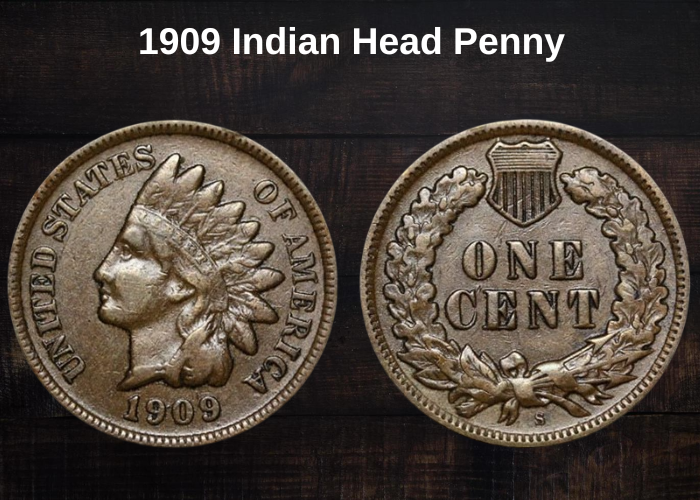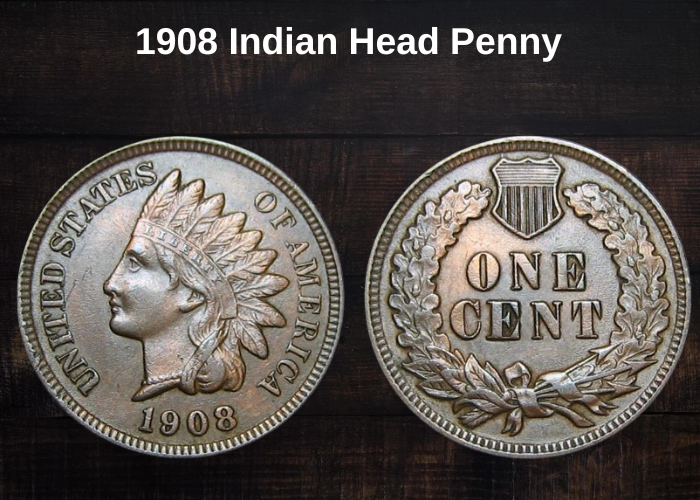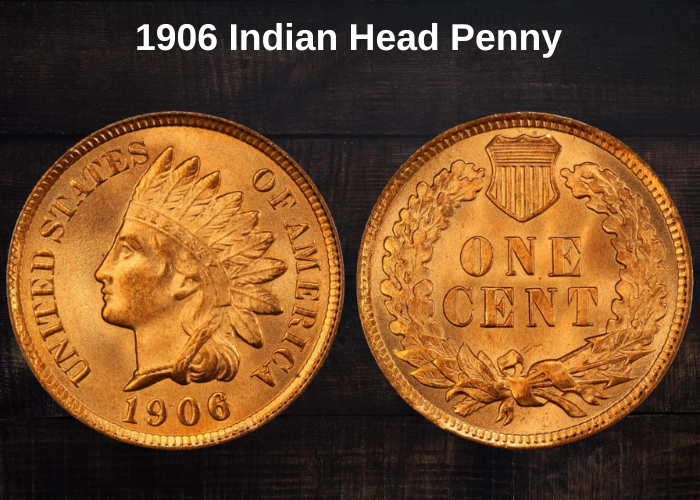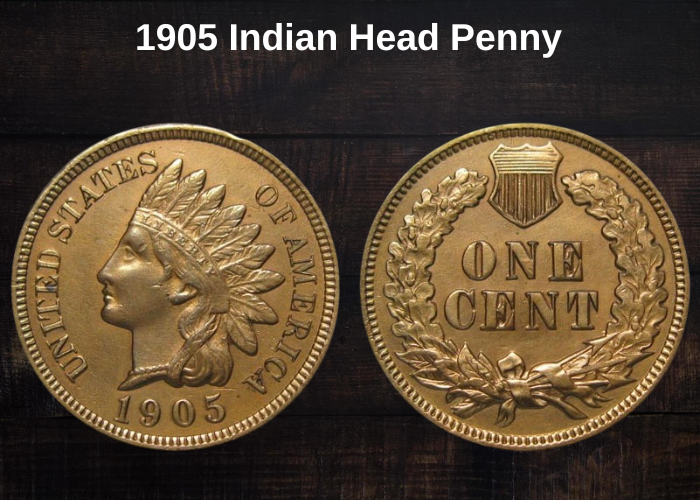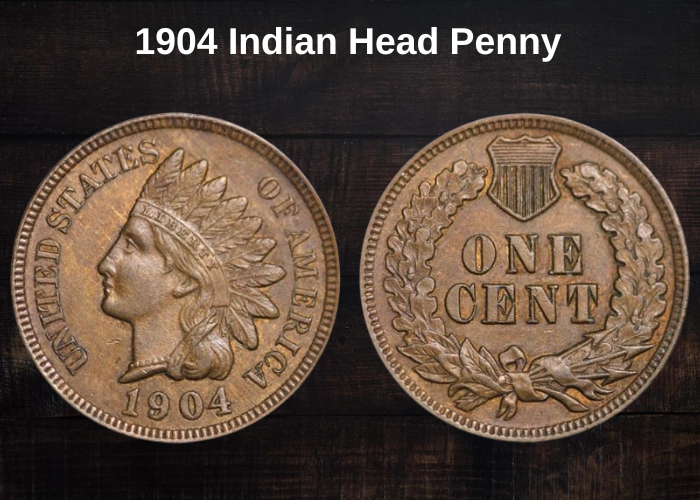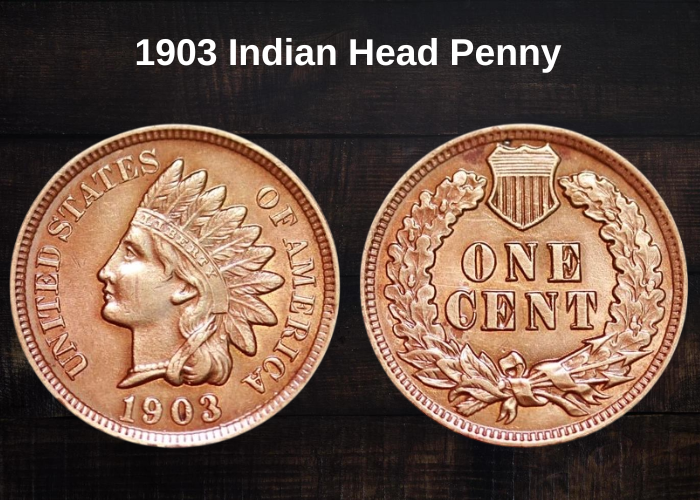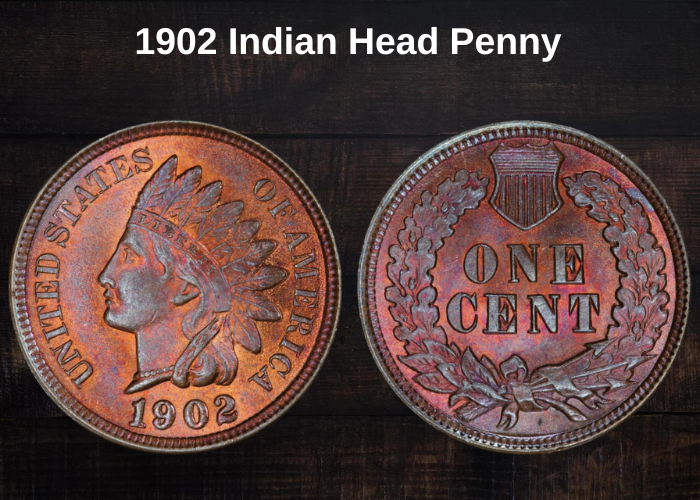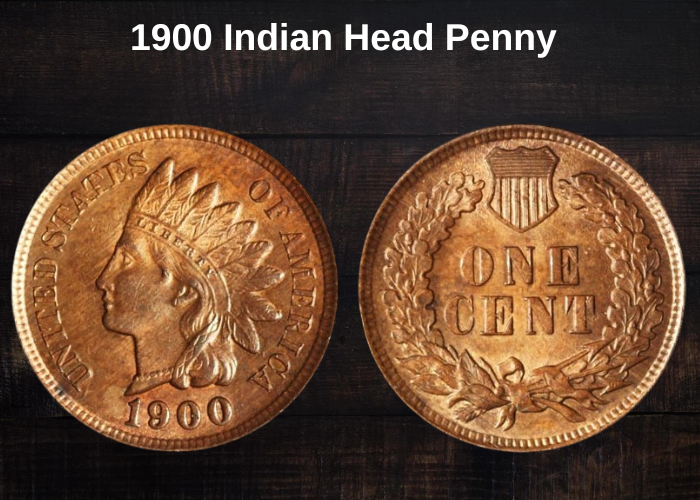Have you stumbled upon an 1899 Indian Head Penny and are wondering if it holds significant value?
You’re not alone!
Many coin collectors are drawn to old coins due to their potential worth, and the 1899 Indian Head Penny is no exception. This coin is highly sought after in numismatic circles.
Being over a century old, most examples found today show signs of circulation or tarnish. However, if you happen to own a fully red, uncirculated 1899 Indian Head Penny, consider yourself extremely fortunate! These rare specimens can fetch hundreds or even thousands of dollars.
In this guide, we’ll cover everything you need to know about the value of the 1899 Indian Head Penny. We’ll dive into its history, characteristics, varieties, and grading tips.
Additionally, we’ll explore coin errors that can significantly boost its value.
So, let’s get started and find out: Is the 1899 Indian Head Penny really worth big money?
1899 Indian Head Penny Value Chart
| Mint Mark | Good | Extremely Fine | About Uncirculated | Uncirculated (MS60/PR60) |
|---|---|---|---|---|
| 1899 No-Mint Mark Indian Head Penny | $6 | $27 | $38 | $55 |
| 1899 Proof Indian Head Penny | – | – | – | $100 |
Values listed apply to brown-graded coins.
The History of the 1899 Indian Head Penny
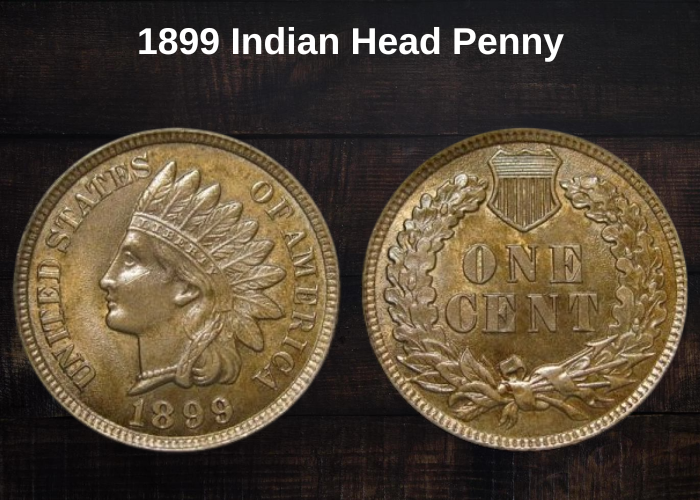
The 1899 Indian Head Penny is part of the Indian Head cent series, which was minted by the United States Mint from 1859 to 1909. The coin’s design, both on the obverse and reverse, was created by James Longacre, who served as the Chief Engraver at the Philadelphia Mint.
The history of U.S. coin production dates back to 1793. For many years, cents were made entirely of copper, but by the 1850s, rising copper prices forced the Mint to explore alternative compositions.
In 1857, the cent’s composition changed from 100% copper to an alloy of 88% copper and 12% nickel. This shift also led to a reduction in the coin’s size and the introduction of the Flying Eagle cent. However, the Flying Eagle design had production challenges due to its high-relief details.
Due to these difficulties, the Mint sought a new design and tasked Longacre with creating an alternative. After several revisions, Mint Director James Snowden approved the Indian Head design, which debuted in 1859.
The Indian Head cent quickly became popular and was heavily hoarded by collectors and the public. To meet demand, the Mint produced large quantities each year, except in 1877, when demand for cents declined, leading to the lowest mintage in the series.
The 1899 Indian Head Penny was one of the last coins in this series before the Lincoln cent replaced it in 1909.
The Features of the 1899 Indian Head Penny
Now, let’s examine the key features of the 1899 Indian Head Penny. You might be wondering why reviewing these details is so important.
In the world of numismatics, a coin’s characteristics are everything. They determine its grade, influence its value, and help identify unique varieties that may be worth significantly more than just face value.
By understanding the specific traits of your 1899 Indian Head Penny, you’ll be better equipped to spot valuable specimens and rare variations that could make your coin highly sought after by collectors.
The Obverse of the 1899 Indian Head Penny
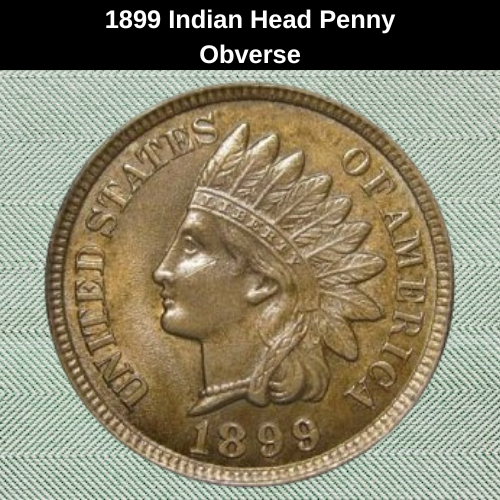
The Indian Head Penny derives its name from its obverse design, which showcases a left-facing portrait of Lady Liberty adorned with a Native American headdress.
The headdress highlights Liberty’s flowing hair and is secured by a band inscribed with the word “LIBERTY.”
Encircling the design, “UNITED STATES” is positioned along the inner rim on the left, while “OF AMERICA” appears on the right.
The mint year, 1899, is prominently displayed at the bottom of the coin.
The Reverse of the 1899 Indian Head Penny
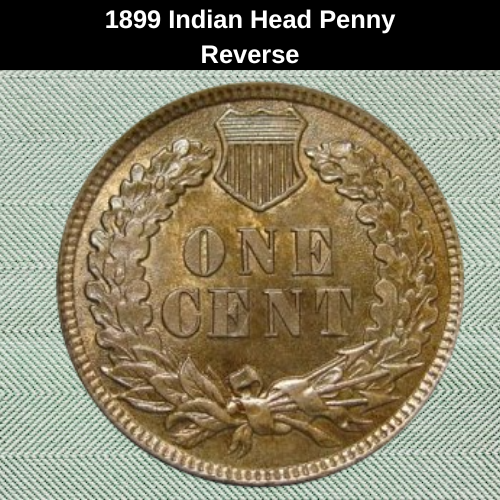
The reverse of the 1899 Indian Head Penny is simple yet rich in symbolism.
An oak wreath dominates most of the surface, with three arrows tied together by a delicate ribbon. The oak wreath signifies strength, while the arrows represent the nation’s sovereignty.
Above the wreath, a small shield is present, symbolizing the country’s commitment to defending its hard-earned liberty, freedom, and democracy.
At the center of the design, the denomination “ONE CENT” is prominently displayed.
Other Features of the 1899 Indian Head Penny
The 1899 Indian Head Penny is made of 95% copper and 5% tin and zinc.
This coin has a plain edge, a diameter of 19.00 millimeters, and a weight of 3.11 grams.
Since all 1899 Indian Head Pennies were minted at the Philadelphia Mint, they do not feature a mint mark on either the obverse or reverse.
1899 Indian Head Penny Grading Guides
While it’s always best to have a professional grade your coin, you can get a general idea of its condition by examining it yourself.
Start by placing the coin under a single light source. If the coin is uncirculated, it will display a complete luster across its surface.
As you tilt the coin under the light, you should see bands of shine, particularly on the high points of the obverse, such as Liberty’s cheek, jaw, chin, and hair curls. These areas should not show signs of wear or dullness.
On the reverse, check for uninterrupted luster on the raised edges of the leaves, the denomination inscription, and the ribbon knot.
Coin Grading Scale:
| Grade | Description |
|---|---|
| 1 | Basal State-1 |
| 2 | Fair |
| 3 | Very Fair |
| 4-6 | Good |
| 7-10 | Very Good |
| 12-15 | Fine |
| 20-30 | Very Fine |
| 40 | Extremely Fine |
| 50 | About Uncirculated |
| 60 | Mint State |
| 65 | Mint State |
| 70 | Mint State |
For a more precise valuation, refer to professional grading guides to determine your coin’s exact scale.
1899 Indian Head Penny Value Guides
The value of an 1899 Indian Head Penny depends on several factors, including its condition, color, and mintage. Coins in better condition and those with a full red tone tend to be more valuable.
There are two main varieties of the 1899 Indian Head Penny:
- 1899 No-Mint Mark Indian Head Penny – Struck at the Philadelphia Mint, this variety is the most common.
- 1899 Proof Indian Head Penny – A specially struck coin with a mirror-like finish, meant for collectors.
The next section will provide a detailed breakdown of the value for each variety based on its condition.
1899 No-Mint Mark Indian Head Penny Value
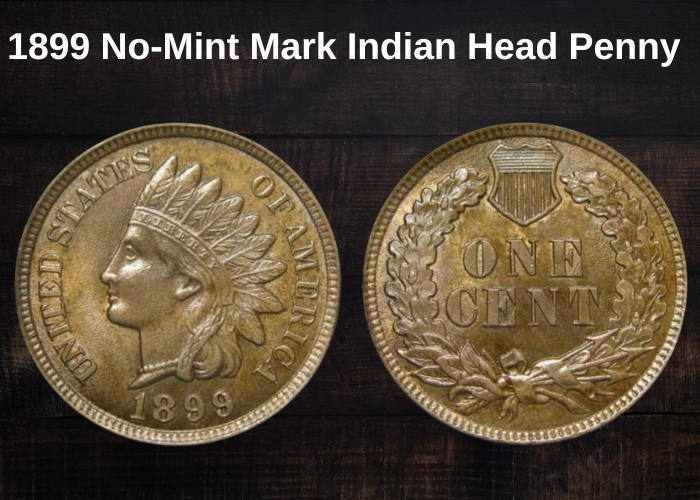
The Philadelphia Mint struck approximately 53,598,000 Indian Head Pennies in 1899, making it one of the highest mintage years in the series. Because of this, these coins are readily available in all conditions, including well-preserved red specimens.
Despite their abundance, 1899 Indian Head Pennies are still valuable because they are worth more than their face value. Here’s a breakdown of their worth based on condition:
- Circulated brown coins range from $4 to $38, depending on their grade.
- Full red specimens start at $115 for MS62 and increase in value with higher grades.
- Ultra-rare MS68 coins can be worth up to $125,000.
One of the most notable sales of an MS68 full red 1899 Indian Head Penny occurred in 2019 at Heritage Auctions, where it sold for $108,000, making it one of the most valuable Indian Head Pennies ever recorded.
1899 Proof Indian Head Penny Value
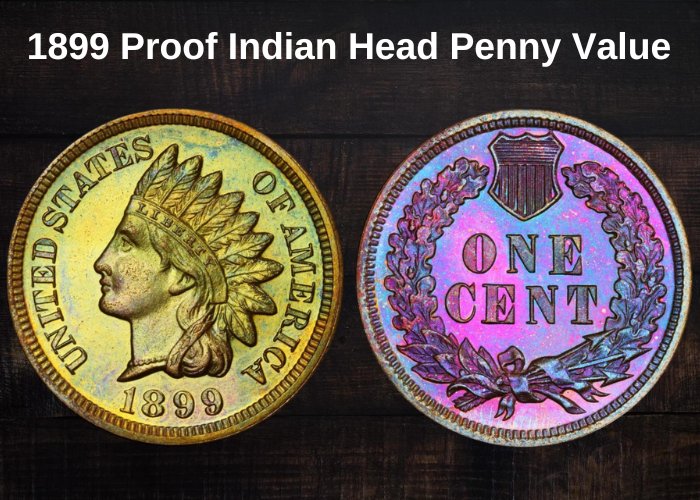
In addition to regular strike coins, the Philadelphia Mint produced an estimated 2,031 proof Indian Head Pennies in 1899. Initially, these proof coins were used as test pieces to check die quality before mass production. Over time, the Mint began producing them specifically for collectors.
Since 1899 had a relatively low proof mintage, these coins are rare and valuable, especially in high grades.
Proof Coin Values Based on Condition:
- Brown Proof (PF62) – Worth around $125
- Brown Proof (PF66) – Up to $1,200
- Brown Proof (PF67) – One of the most expensive brown proofs sold for $2,875 at a 2010 Bowers & Merena auction
Full Red Proofs:
- PF63 Red Proof – Worth $350
- PF67 Red Proof – Can fetch up to $6,500
Cameo & Deep Cameo Proofs:
- The rarest and most valuable proof coins are Cameo (CAM) and Deep Cameo (DCAM) specimens.
- PF67 Cameo Proof – Sold for $13,800 at a 2004 Bowers & Merena auction, making it one of the most expensive proof examples.
With their limited mintage and collector appeal, 1899 Proof Indian Head Pennies remain highly sought after, especially in top grades and with exceptional color.
Rare 1899 Indian Head Penny Errors List
If you find an unusual-looking 1899 Indian Head Penny, take a closer look—it might be an error coin with significant value.
1899 Re-punched Date Indian Head Penny Error
A re-punched date error happens when a number in the year is struck multiple times onto the working die, causing a slight overlap or doubling effect.
For some 1899 Indian Head Pennies, this error is most noticeable on the number 8, where a visible doubling can be seen due to a misalignment during punching.
Coins with this re-punched date error typically have a value of $25 to $30, which is a significant increase compared to their face and intrinsic value.
1899 Broadstrike Indian Head Penny Error
A broadstrike error happens when a coin is struck outside the holding collar, which is responsible for maintaining its shape and proper dimensions.
Without the collar, the coin may appear wider and slightly distorted, losing its perfectly circular form.
If you come across an 1899 Indian Head Penny with a broadstrike error, its value can range from $35 to $40, depending on the severity of the error. The more pronounced the broadstrike, as long as the date remains visible, the higher the coin’s value.
1899 Die Break Indian Head Penny Error
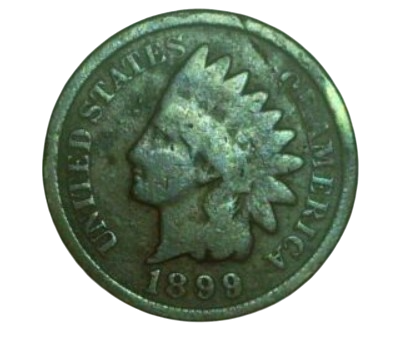
A die break error occurs when a section of the working die cracks or breaks, leading to an incomplete transfer of the coin’s design.
As a result, the affected area on the 1899 Indian Head Penny may appear blank or depressed, depending on the severity of the breakage.
Coins with this error typically range in value from $20 to $25, but in some cases, collectors have paid up to $75 for a well-defined die break penny.
1899 Reverse Cud Indian Head Penny Error
Cud errors are an extreme form of die break errors, where a significant portion of the die breaks off, leaving a raised blob on the coin’s surface.
These blobs can obscure inscriptions, designs, or other key features of the coin.
Because cud errors are more dramatic and noticeable than standard die breaks, they tend to be more valuable. While die break errors can sell for up to $75, cud errors on an 1899 Indian Head Penny can reach $150 or more, depending on their size and visibility.
FAQ
What is an 1899 Indian Head Penny made of?
From 1864 to 1909, all Indian Head Pennies, including those struck in 1899, were composed of 95% copper and 5% tin and zinc. Checking the metal composition is a good way to verify the authenticity of your coin.
Are 1899 Indian Head Pennies valuable?
Yes! The 1899 Indian Head Penny is worth more than its face value today. These coins can be quite valuable, especially if they are in uncirculated condition. Given their age, finding a well-preserved specimen is difficult, making them a great investment for collectors and sellers alike.
How rare is an 1899 Indian Head Penny?
The 1899 Indian Head Penny is not considered rare, as over 53 million were minted. However, finding one in excellent condition can be challenging since most have been heavily circulated over the years. High-grade specimens, especially full red uncirculated examples, can be quite valuable.

